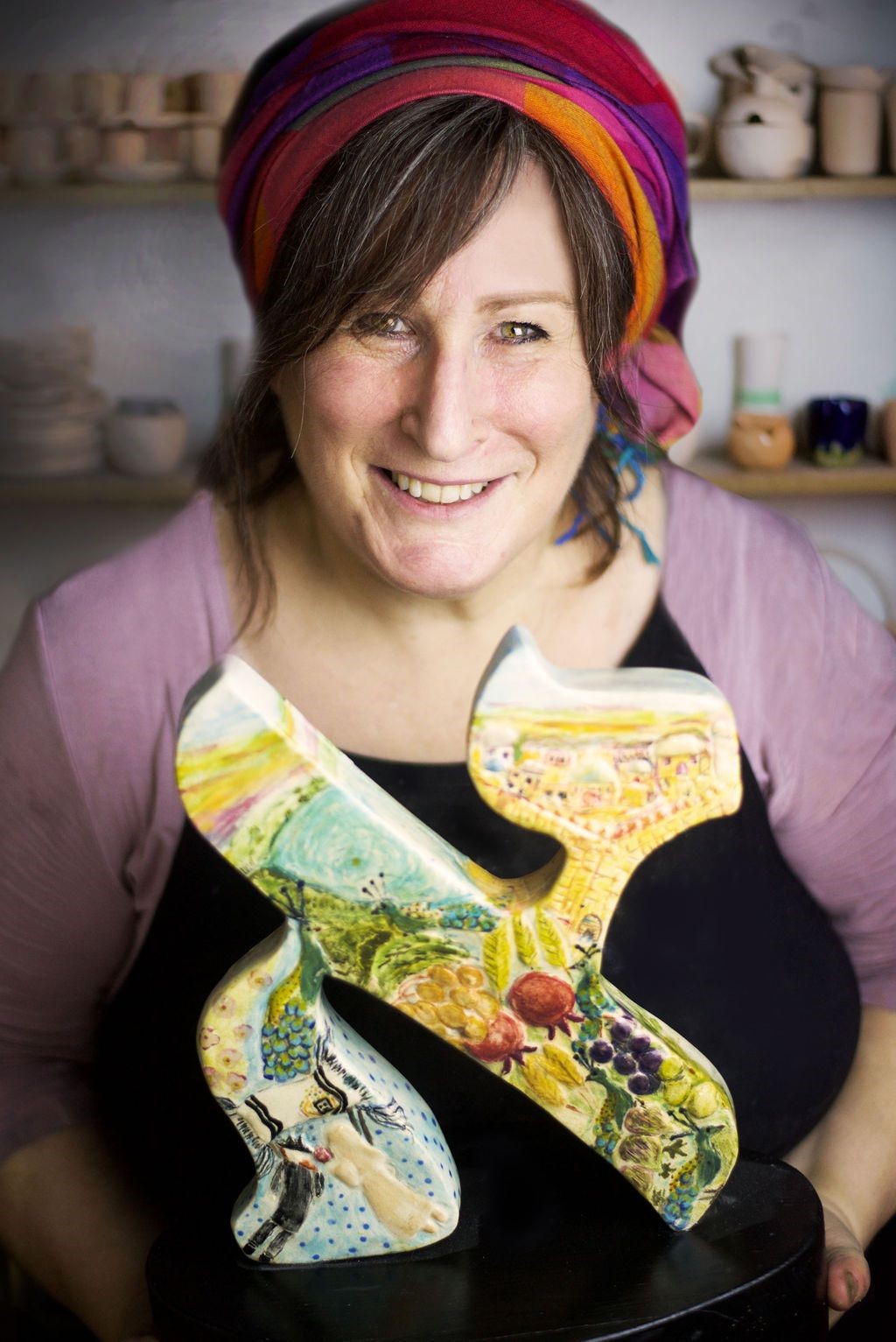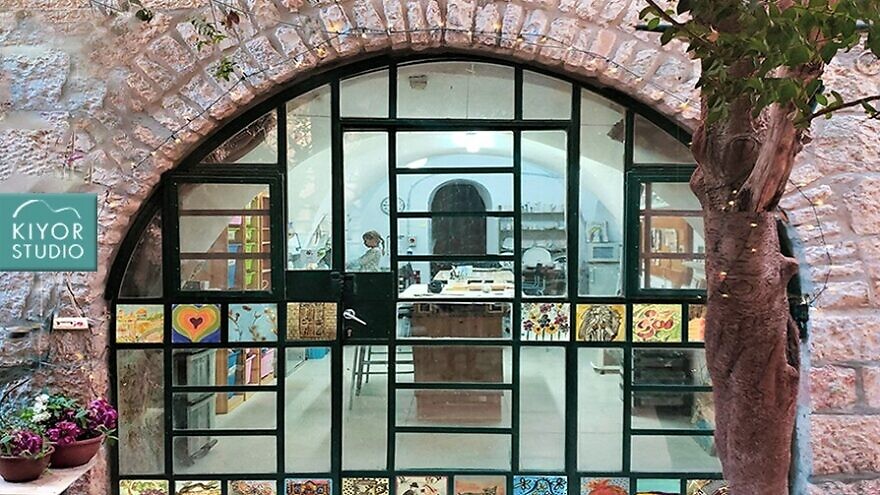Tucked in twists and turns of the Jerusalem neighborhood of Nachlaot are homes and buildings with a stately feel, even somewhat serene, being just streets away from the bustle of the Machane Yehuda open-air market. One of the businesses there is Kiyor Studio for Ceramics and the Arts, opened shortly before the coronavirus pandemic by Canadian-born, longtime New Yorker-turned-Israeli Chaya Esther Ort, 61—a wife, mother, grandmother and artist who, as the saying goes, proves that good things come to those who wait. She talks about her philosophy, her projects and how Jerusalem, and the holiday of Passover, play a part in them.
Q: Why, when and how did you open your studio?
I first stepped foot in Israel at 15. My grandmother sent me on a summer trip because she wanted me to love Israel. I was smitten again.
During the busy years when I was raising my family, I was too busy being a wife, mother and graphic designer to even dream of the day when I could make aliyah and devote myself to making art. Fortunately for me, dreams really do come true, and in 2008, I made aliyah with my husband and two youngest children, then 15 and 18. Our eldest daughter had made aliyah on her own the year before, and our two older boys are still in the United States.
With the kids mostly grown, I resumed my love affair with clay again, developing my practice and my own style at a studio in Jerusalem.
Eventually, I was spending so much time there, I opened my own studio three years ago (in 2019), down the street from my home in Nachlaot.
My passion is to use my art to spread the beauty and light of Israel’s land and spirit into the world. The fact that my ceramics are made of clay from the actual physical land means that no matter where someone lives, they can have a piece of Israel with them, materially and spiritually. And when it is also beautiful and useable, Israel is a meaningful and active part of their daily living.
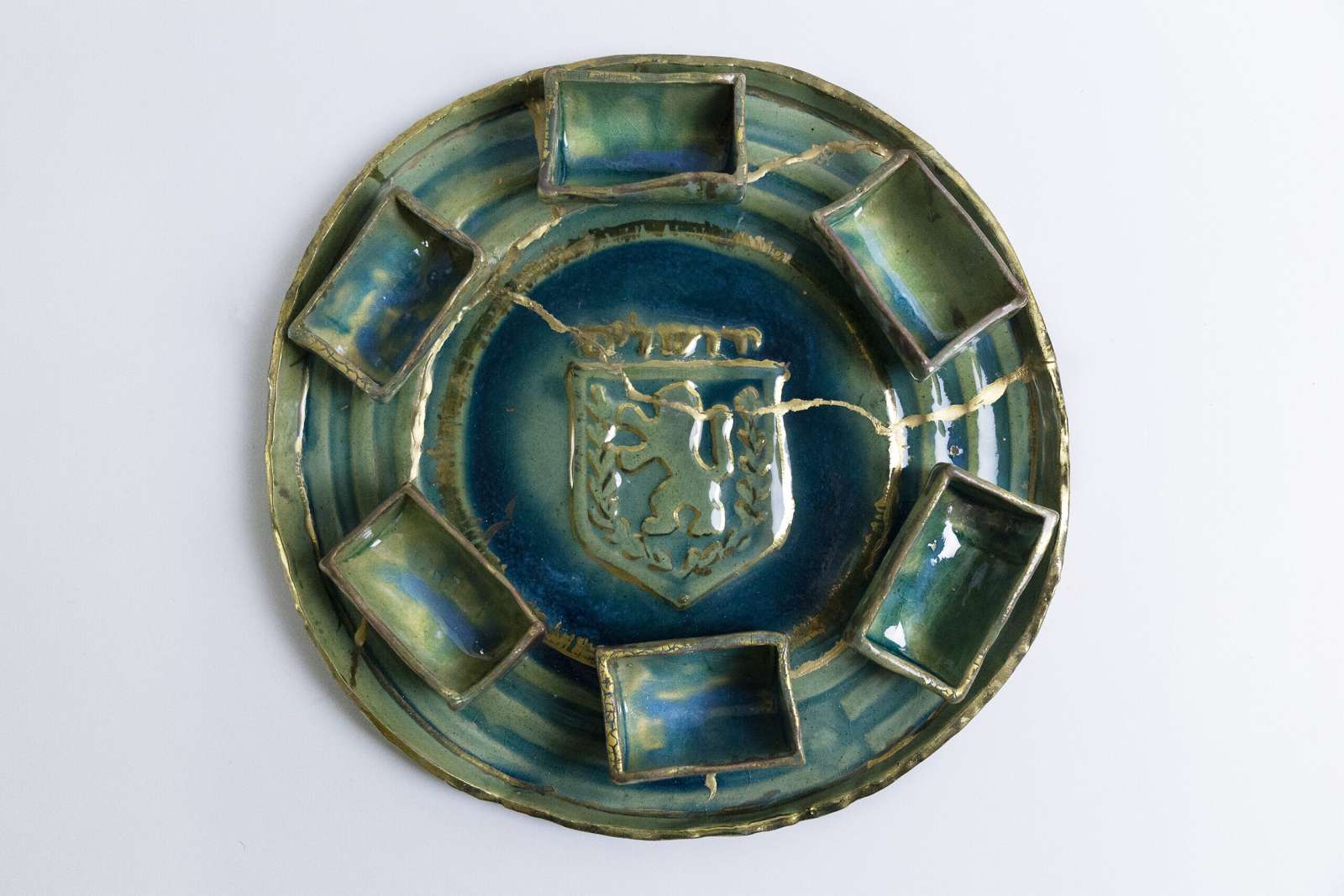
Q: How is Israeli clay different from other types of clay, and where do you get the material?
A: There is a concept in Judaism that everything in the spiritual world has a physical counterpart and vice versa—like two sides of a coin, they are inseparable.
That is why I use clay hewn from the actual earth of Israel because the physical clay has Israel’s spiritual sparks embedded within it. Most of it is from the Negev Desert. I use a range of colors, including white, pink, sand and dark brown.
When you serve up a meal on dinnerware inspired by a breathtaking Mediterranean sunset, drink morning coffee from a hand-painted mug inspired by a lush pomegranate orchard or light Sabbath candles in holders made from the actual earth of the Holy Land, these physical things are infused with the spiritual energy of the land that inspired it, and from which it has literally been made.
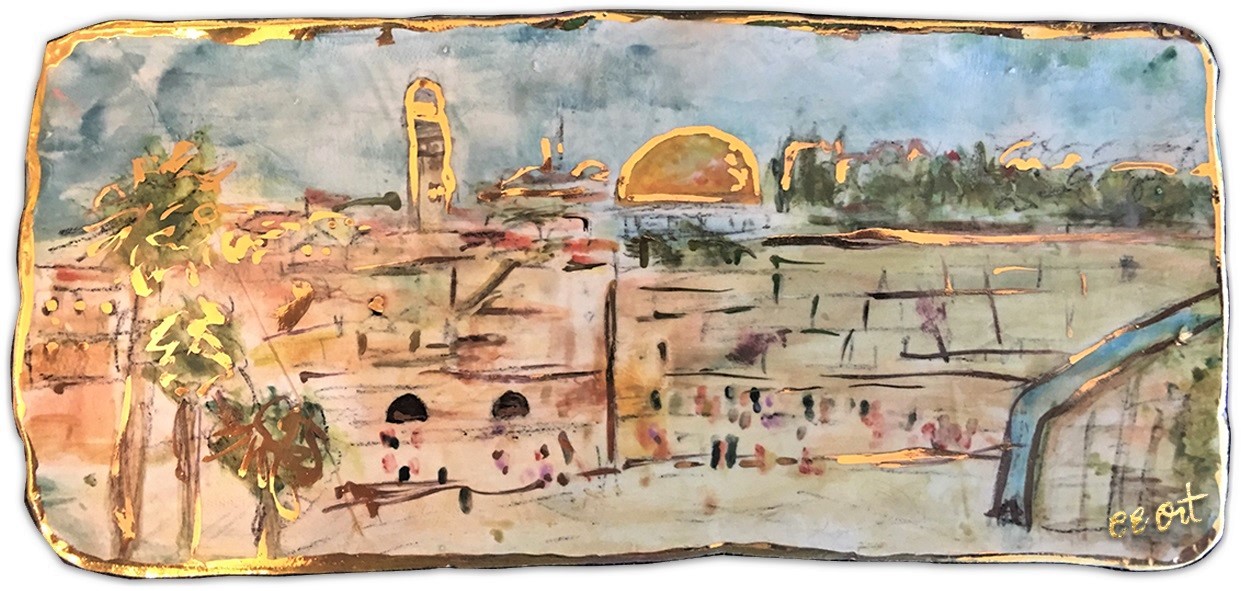
Q: What objects do you focus on in making your art? What are some of your most popular pieces?
A: As an artist, I am inspired by the beauty of Israel’s land and seascapes—from the lush greens of the Golan and the Galilee in the north, to the stark grandeur of the Dead Sea, and the desert sand and stone of the Negev, the clear turquoise and teals of the Mediterranean, to the Judean Hills and Jerusalem of gold. Divine beauty abounds everywhere you look, especially in the rich and varied jewel tones of the land’s bounty—pomegranate reds, purple grapes and figs, sienna dates and olive green.

I believe in the power of art to elevate everyday life, especially functional art, which combines beauty and imagination with usability and practicality.
The synthesis of aesthetics and functionality allows art to be an active part of everyday life, infusing the things we use with beauty, and integrating art into everyday life in a way that elevates both the art and the things we are using. When art and the things we use in everyday life become one, both become a kind of sacred celebration of life.
I make one-of-a-kind, heirloom-quality Judaica, table art and jewelry, as well as custom tile murals for backsplashes and installations. After hand building the clay bodies and bisque firing them, I abstract glaze or hand-paint scenes of the life and land of Israel. Each piece is given a flourish of kiln-fired 22-karat gold accents and bears my original signature. Major pieces, such as seder plates and menorahs, come with a certificate of authenticity.
Some of my most popular pieces are menorahs, candlesticks and Kiddush cup sets. They make very special wedding gifts that will be used week after week, year after year, destined to become treasured family heirlooms. I also hand-paint table art and giftware such as tea sets, dessert plates and platters and tea lights with themes of Israel’s seven special species.

Q: Some of your pieces have cracks in them. Why is that; is it intentional?
A: In ceramics, breakage is an occupational hazard. I never hope for something to emerge from the kiln cracked or broken, but when it does, I use the ancient Japanese technique of Kintsugi, or Kintsukuroi, to repair it.
Built on the idea that by embracing flaws and imperfections you can create an even stronger, more beautiful piece of art, Kintsugi celebrates the beauty and acceptance of imperfection. It reminds us that when life deals us blows that break us, we can put ourselves back together, and be stronger and more beautiful for it.
It’s a powerful metaphor for life, where nothing is ever truly broken. By working in clay, I feel like I am also restoring the broken parts of myself.
From Kintsugi, I have learned that even if something, including me, is broken, it can be repaired, and although it may have scars, it can still be useful and beautiful—“perfectly imperfect.”
With my “Next Year in Jerusalem” (NYIJ) collection, there was an unusually high percentage of breakage—a serendipitous symbol of the splitting of the Red Sea and a reminder of Jerusalem’s history of being destroyed and rebuilt over and over since the destruction of the First Temple in 586 BCE, about which we conclude the Passover seder with the declaration and prayer, “Next year in Jerusalem.”
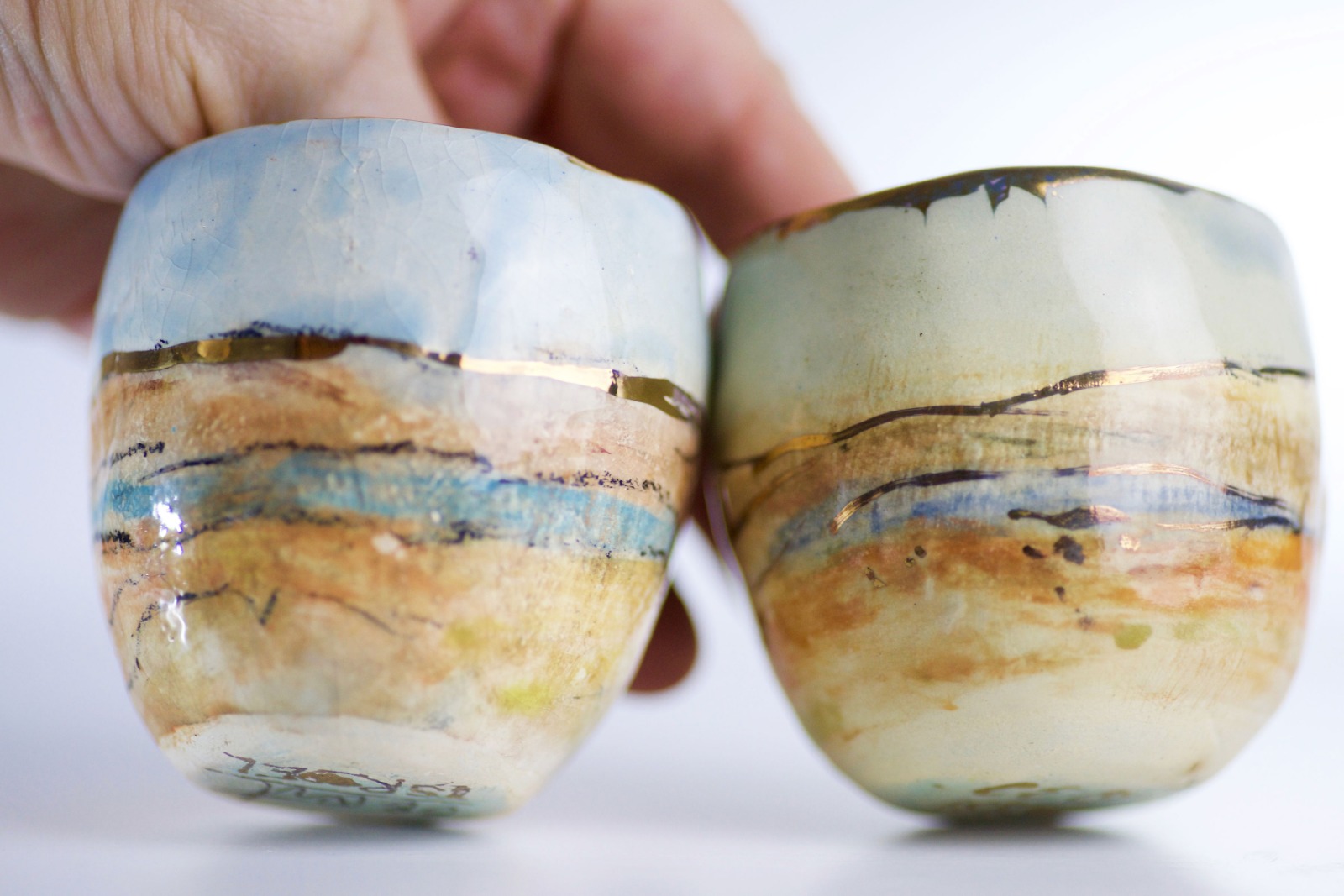
Q: How do you want people to perceive your artwork, aside from aesthetics and usage? And what are your goals for the studio?
A: My studio is more than a place where I design and make my original collections of Judaica, table art and jewelry, as well as tile murals for custom backsplashes and installation. From the beginning, I have seen my studio as a space where others can learn and practice their own craft in a collaborative atmosphere. I offer lessons in hand-building and the wheel, as well as what I call “clay dates.” Open studio time is also available for those who can work in clay independently.
When I came back to working in clay again, quite organically I found that so many of the character traits and qualities I have worked on developing all my life I was experiencing in my ceramics practice.
Things like patience, acceptance, flexibility, open-mindedness and honesty are some of the many powerful lessons clay has taught me. I discovered that as I worked, I was able to access the lessons I was learning in my relationships and my life outside the studio. And that makes so much sense because, as is written in Genesis’s account of creation, God created man from the dust of the earth. We are, quite literally, made of clay. When we are working in clay, we are necessarily working on ourselves.
That is an amazing lesson that I want to share with others.
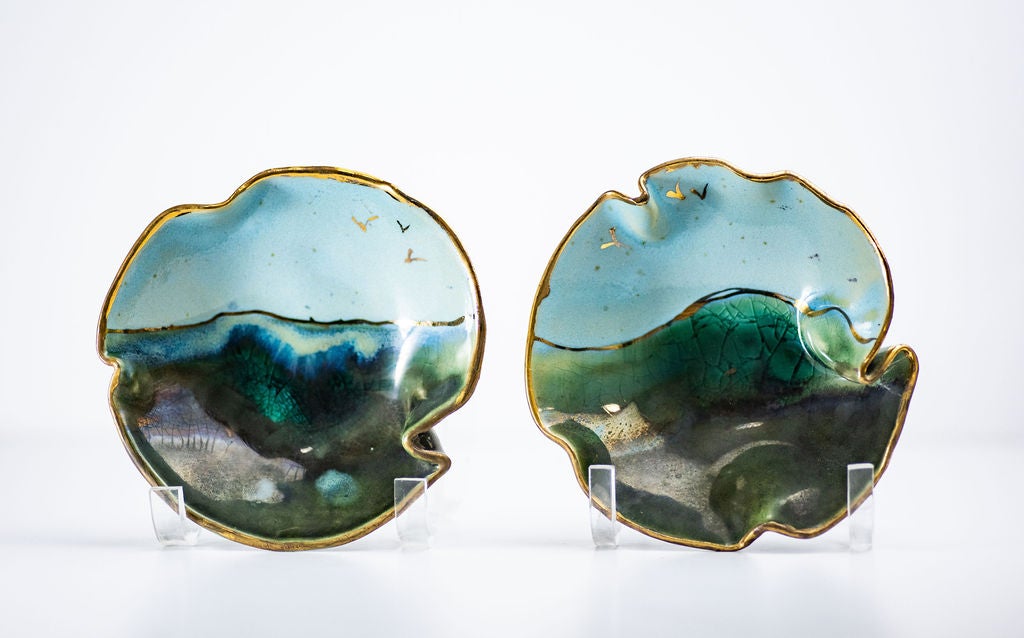
Q: Is there anything else you would like your audience to know?
A: My customers and followers on social media include people of all faiths who love both art and the Land of Israel. My work is especially valued by collectors of original ceramic art.
For me, making functional art in Israel—and of Israel—is a blessing that I am so grateful for every single day.
With tourism finally coming back, I am looking forward to again hosting hands-on workshops and presentations in the studio for families, Birthright trip participants, Momentum groups and other visitors to Israel who want to explore art, spirituality and the Land of Israel.
Chaya Esther Ort’s work can be seen at kiyorstudio.com and on Etsy @kiyorstudo, as well as on Instagram and Facebook @kiyorstudio. Visits to the studio can be made by appointment using WhatsApp: +972 (0)52-449-5858.
